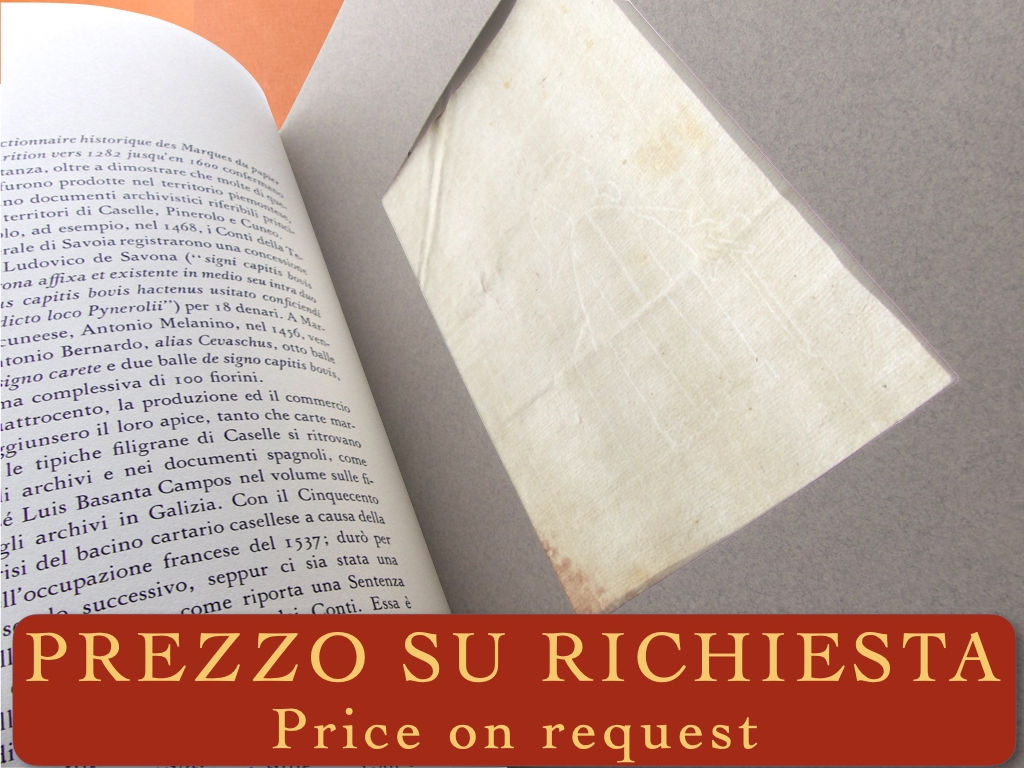


– PRICE ON REQUEST –
The Supplement is dedicated to the history of hand papermaking through the centuries and the history of 20th-century fine printing, and it includes original paper samples from the 16th century onwards. It is intended to expand and enrich the themes addressed in the previous five volumes of the set of the "Manuali Tipografici".
A volume in the 4to format (37x23 cm) of 144 pages typeset by hand in 12 pt Tallone type.
 Complimentary gift wrapping and personalized message for the receiver available at checkout*
Complimentary gift wrapping and personalized message for the receiver available at checkout*
(*) no additional charge will be applied

Shipping costs calculated at checkout
This edition is limited to only 112 copies (of which 48 on cotton paper made in Sicily and 64 on Magnani cotton paper made in Tuscany), because of the rarity and preciousness of the paper samples included in the volume.
The "Supplemento" is therefore mostly intended for those who wish to integrate the set of the “Manual Tipografici” already in their possession.
Index of the tipped-in ancient specimens:
- watermark of a Friar, made by the Capucini Papermill, Caselle Torinese, Piedmont, Italy (18th-19th century):
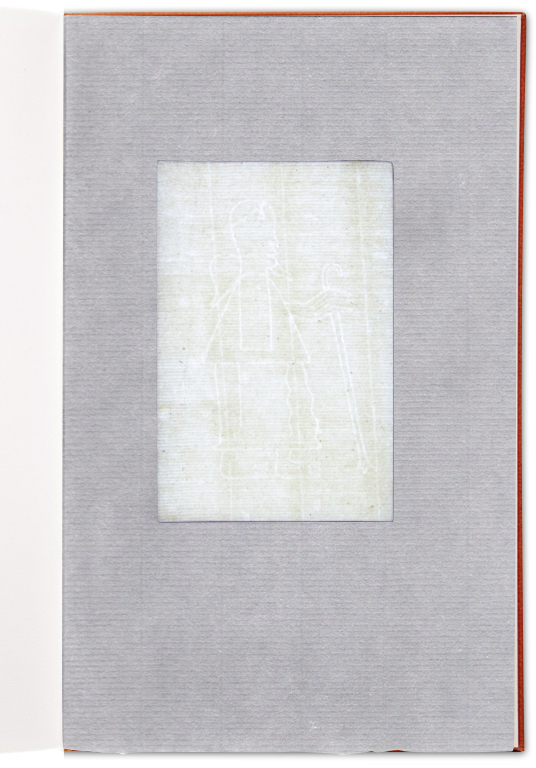
- paper samples and watermarks made in the territory of the Venetian Republic (16-19th centuries);
- two Whatman paper samples made in Maidstone, Kent, of which the first made in the early years of the Papermill (18th century) and the second made in the late years, just before the Whatman Papermill ended hand-papermaking production (1940s);
- ancien paper samples (16-20th centuries) featuring different kinds of defects and irregularities (clumps, creases, thickening at the edges, impurities, …), which were a common occurrence in the hand-papermaking process;
- Chiaroscuro watermarks by Fabriano and Magnani papermills (1930-1990);
- contemporary European and American handmade papers by Johannes Follmer (Germany), Papelera Don Bosco (Peru), Paper Circle (USA), Papeterie Saint Armand (Canada), Paper Foundation (UK), Magnani (Italy);
- contemporary watermark by Pino Guzzonato, expressly handmade for this edition;
- reproduction of frontispieces and text pages of 1930s books by Parisian printers Léon Pichon and Maurice Darantiere. These specimen have been typeset by hand in the same types used originally (one of them shown below):
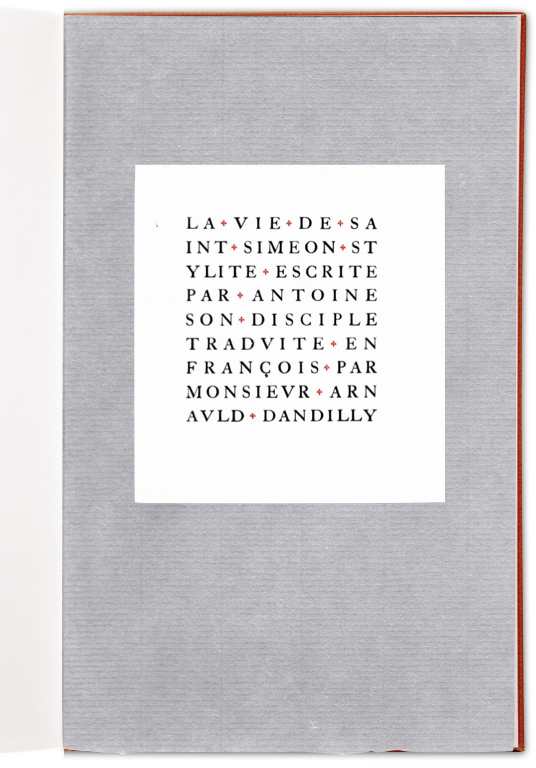
- reproduction of frontispieces of 1940-50s books printed by Alberto Tallone in Paris. These specimen have been typeset by hand in the same types used originally.
Index of texts:
- (area: history of papermaking) Giancarlo Castagnari, Dall’era del segno alla filigrana in chiaro-scuro.
- (area: history of 20th-century fine printing) Luigi Manias, Typographie pure. Genesi di una prassi.
- (area: history of 20th-century fine printing) Enrico Tallone, James Joyce’s Ulysses. A novel in the novel. (It describes in detail how Ulysses was printed by Maurice Darantiere in Dijon, whose Printing Press was then passed on to Alberto Tallone: it reveals the reason why such a long text was typeset by hand, and the reasons behind the choice of certain typefaces; moreover, it goes in depth into explaining the printing process and the technical difficulties implied therein).- (area: history of papermaking) Luigi Manias, La bellezza dei difetti.
- (area: history of papermaking) Mario Cerchiai, Ricordo di Silvio Vezzani.
- (area: history of papermaking) Peter Bower, Every sheet of paper tells a story. (The work of a paper historian and investigator, who is called upon to contribute to the authentication of artworks: some significant case studies)
- (area: history of papermaking) Timoty Leonardi, Carta e cartiere a Caselle. Il primato della B42.
- (area: history of papermaking) Davide Rampello, La bella luna.
- (area: history of 20th-century fine printing) Enrico Razzini, L’ultimo regalo di Alberto. Integrazioni all’Opera Tipografica.
***
Fifteen copies include a 10x19,5 cm original engraving by Luciano Ragozzino. The subject represented is a small but voracious feeder on paper, the so-called “silverfish” (Lepisma saccharina), less than a centimeter long:
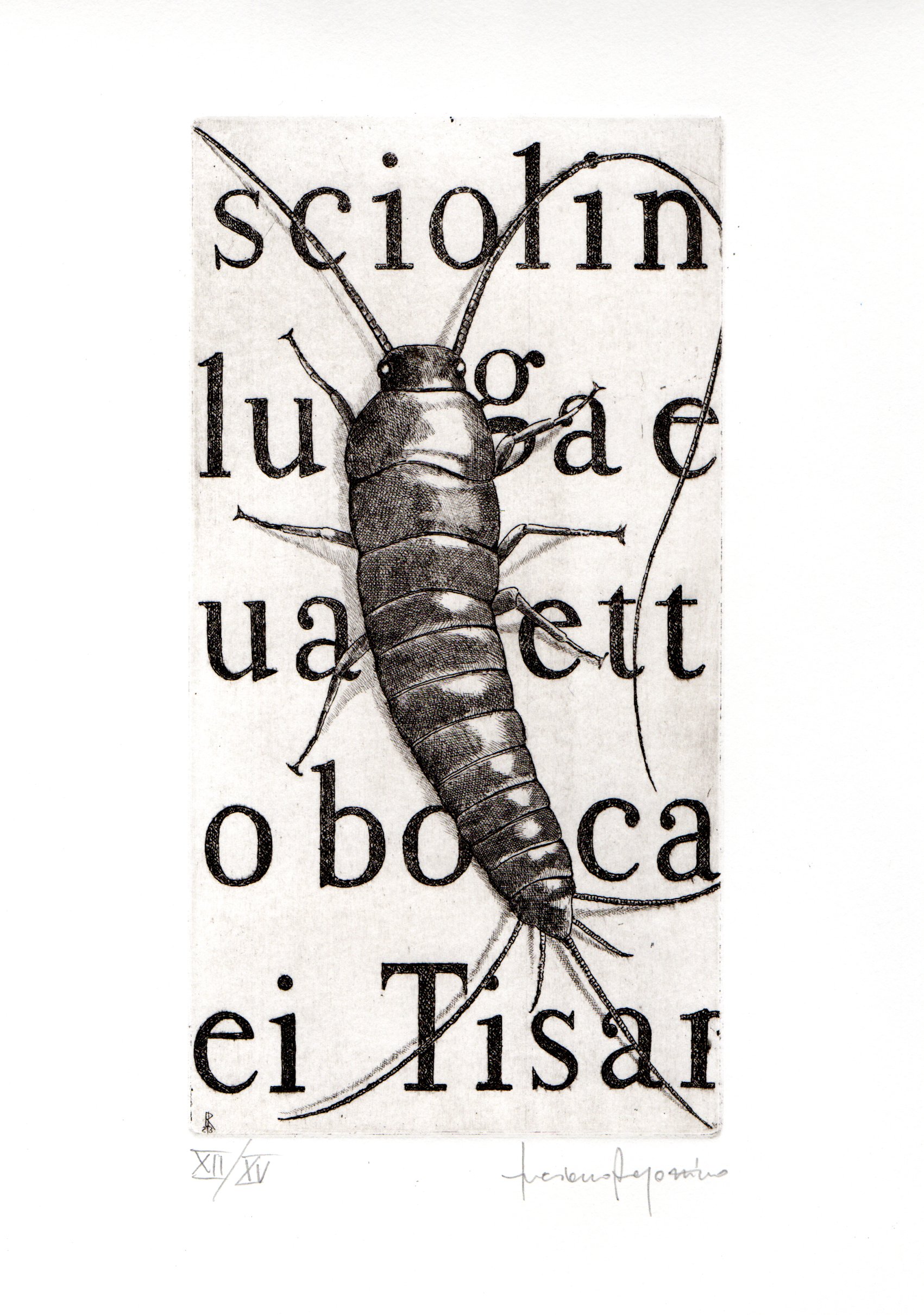
Moreover, five copies include a frottage by Giorgio Milani ("frottage" is created by rubbing a crayon over a raised area, in this case made of wood types. This print run is no more available):
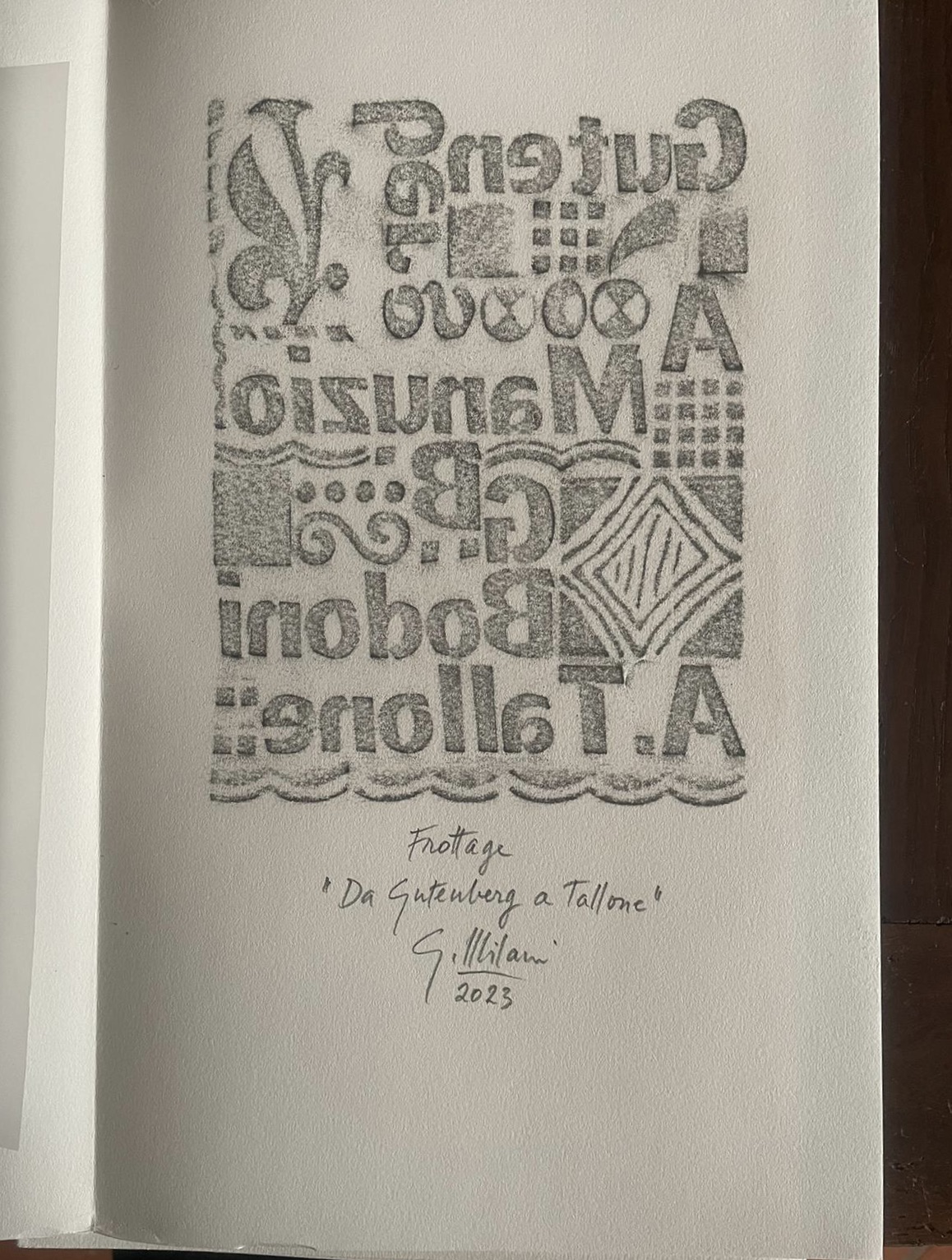
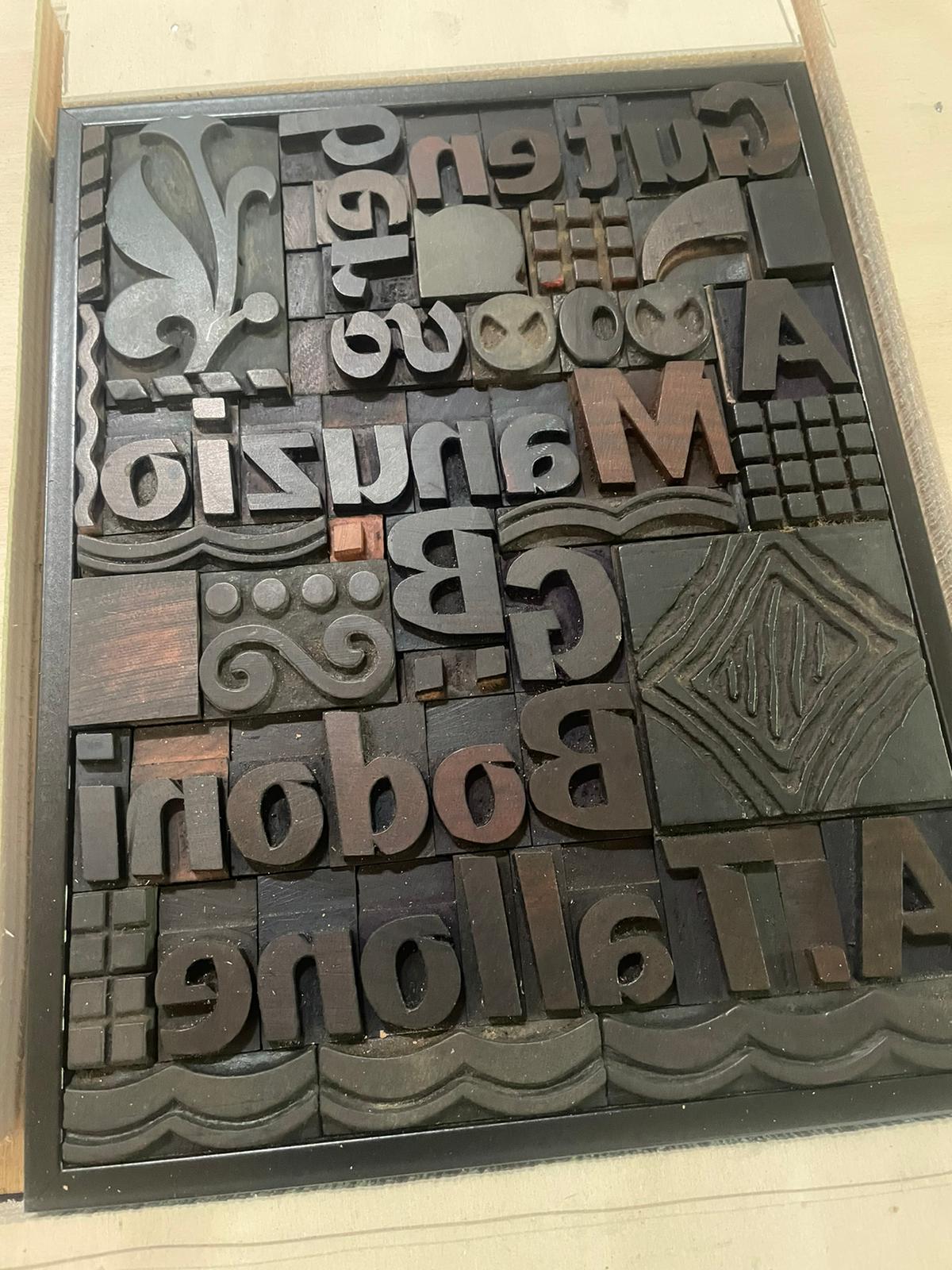
The number of movable types handled for the typesetting of this book makes it an exceptional endeavor in contemporary fine printing.
Neither monotype, linotype nor plastic compositions were used.